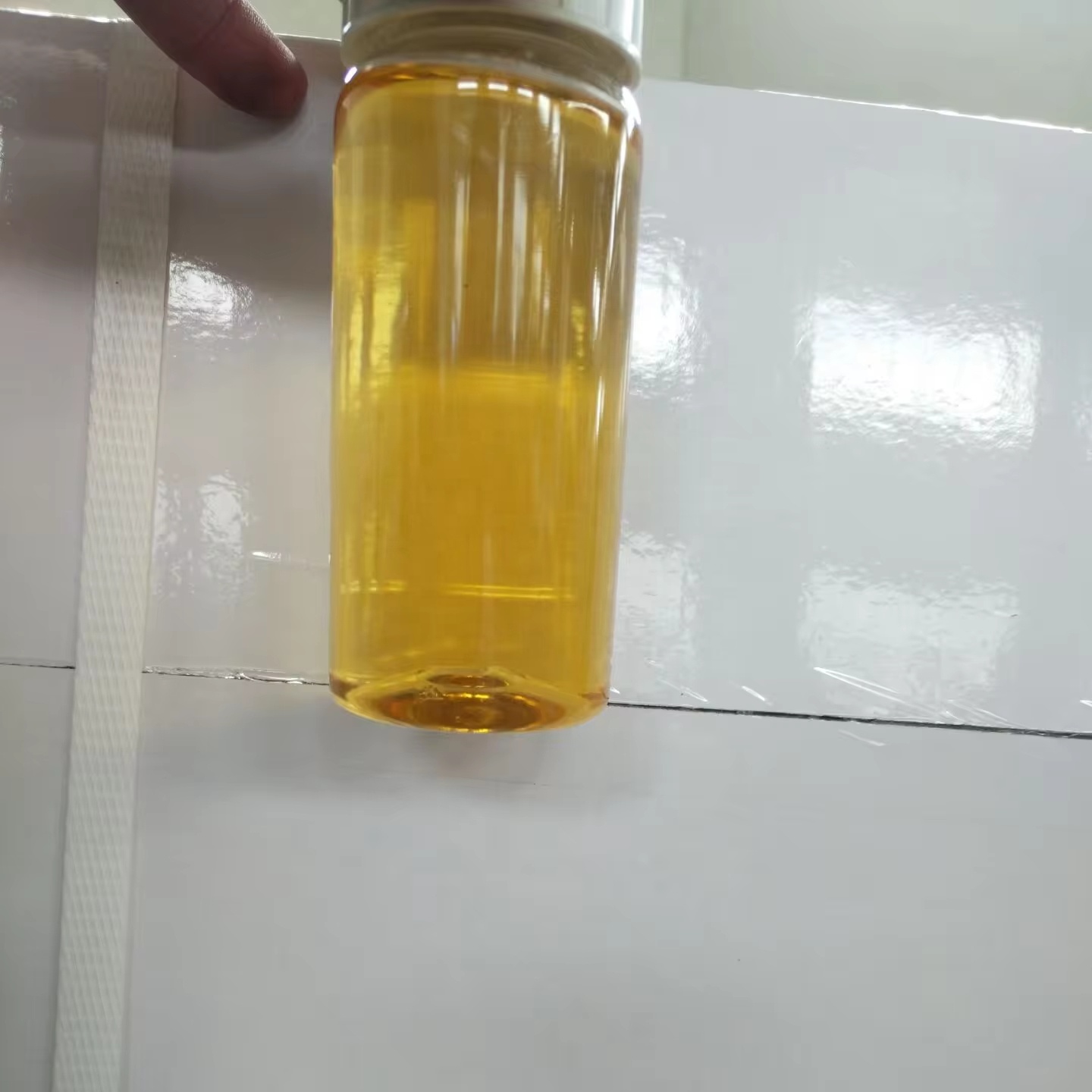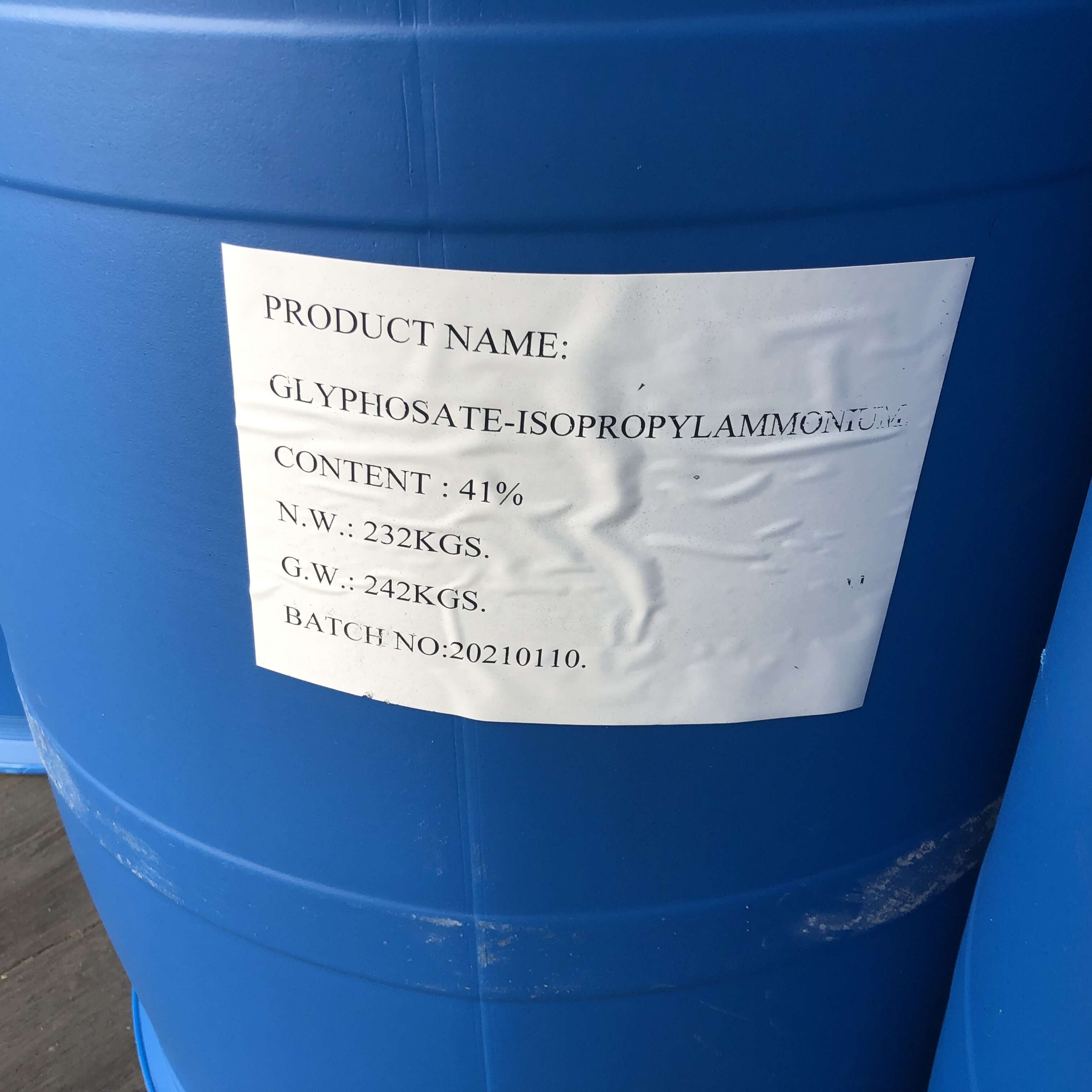Glyphosate is a non-selective, non-residual herbicide that is highly effective against perennial rooted weeds and is widely used in rubber, mulberry, tea, orchards and sugarcane fields. It mainly inhibits the enolacetone-based shikimin phosphate synthetase in plants, thus inhibiting the conversion of shikimin to phenylalanine, tyrosine and tryptophan, which interferes with protein synthesis and leads to plant death. Glyphosate is absorbed by stems and leaves and then transmitted to all parts of the plant, which can prevent more than 40 families of plants such as monocotyledon and dicotyledon, annual and perennial, herbs and shrubs. Glyphosate quickly binds to iron, aluminum and other metal ions and loses its activity.
Originally used in rubber garden to prevent thatch and other weeds, can make rubber trees cut 1 year earlier, old rubber trees increase production. Now it is gradually promoted in forestry, orchards, mulberry gardens, tea gardens, rice and wheat, rice and rape rotation fields. The sensitivity of various weeds to glyphosate is different, so the dosage is also different. For example, annual weeds such as paspalum, setaria, niang, beef sinew, Matang, and pig plies, the dosage is 6 ~ 10.5g /100m2 according to the effective ingredients. The dosage of Psyllium psyllium, Pegasus japonicum and anagarum japonicum were 11.4 ~ 15g/100m2 according to the effective components. For white grass, bone grass, reed, etc., it is necessary to 18 ~ 30g/100m2, generally mixed with water 3 ~ 4.5kg, and uniform directional spraying of weed stems and leaves. General broad-leaved weeds in the early germination or flowering stage, gramineae in the late jointing or early heading of the amount of medicine per acre with water 20-30 kg spray. Plants whose stems and leaves have been cut should not be applied until weed C has grown enough new leaves. The control effect of perennial weeds can be improved by dividing the dose into 2 times and applying it 5 days apart.
Control the weeds in apple orchard, peach orchard, vineyard, pear garden, tea garden, mulberry garden and farmland leisure land, and the annual weeds such as paspalia, triticum, cow sinew, Ma Tang, Xanthium, quinoa, chickweed, pig.
Glyphosate does not kill until it comes into contact with green tissue. Because the sensitivity of various weeds to glyphosate is different, the dosage is also different.
1, orchard, mulberry garden and other weed control: 1 year weeds per mu with 10% water agent 0.5-1 kg, control perennial weeds per mu with 10% water agent 1-1.5 kg. Add 20-30 kg of water and spray weed stems and leaves in a directional way.
2, farmland weeding: farmland stubble sowing before the prevention of weeds that have grown in the field, the amount of medicine can be referred to orchard weeding. For cotton growing period, it is necessary to use directional spraying with hood spray. Use 0.5-0.75 kg of 10% water agent per mu and add 20-30 kg of water.
3, leisure land, field, roadside weeding: in the weeds 4-6 leaf period, each mu with 10% water agent 0.5-1 kg, add 100 ml of diesel, add 20-30 kg of water, spray weeds.
4. For some malignant weeds, such as radix aconite reed, etc., additives can be added according to 200 grams per acre, and the weeding effect is good.
Matters needing attention
broadcast
EDITOR
1, glyphosate is a killer herbicide, should not pollute crops when applying, so as not to cause drug damage.
2, for perennial malignant weeds, such as white grass, Radix aconite, etc., 1 month after the first drug application, in order to achieve the ideal control effect.
3, in sunny days, high temperature drug effect is good, after spraying 4-6 hours of rain should be sprayed.
4, glyphosate is acidic, storage and use should try to use plastic containers.
5. Spray equipment should be cleaned repeatedly.
6, when the packaging is damaged, it may return to moisture and caking under high humidity, and there will be crystallization when stored at low temperature. When used, the container should be fully shaken to dissolve the crystallization to ensure the efficacy.
7, for the absorption conduction type of herbicide, pay attention to prevent the mist from drifting to non-target plants to cause drug damage.
8, easy to lose activity with calcium, magnesium, aluminum plasma complexation, dilute pesticides should use clean soft water, mixed into mud or dirty water will reduce the efficacy.
9. Do not mow, graze or turn the land within 3 days after application.
Post time: Jul-03-2024







